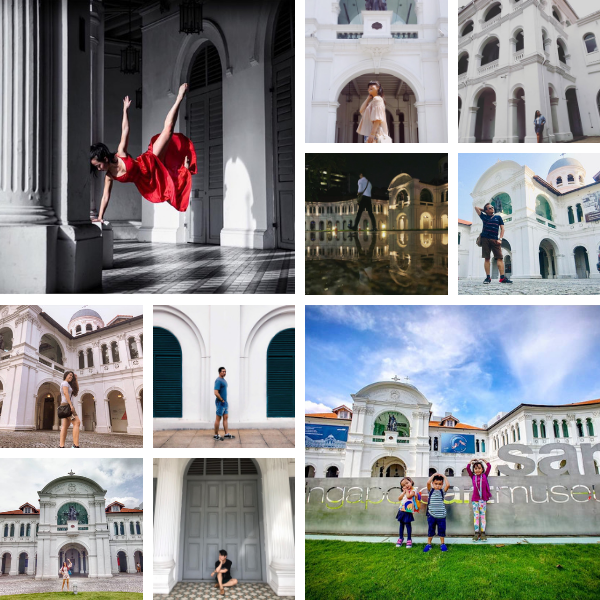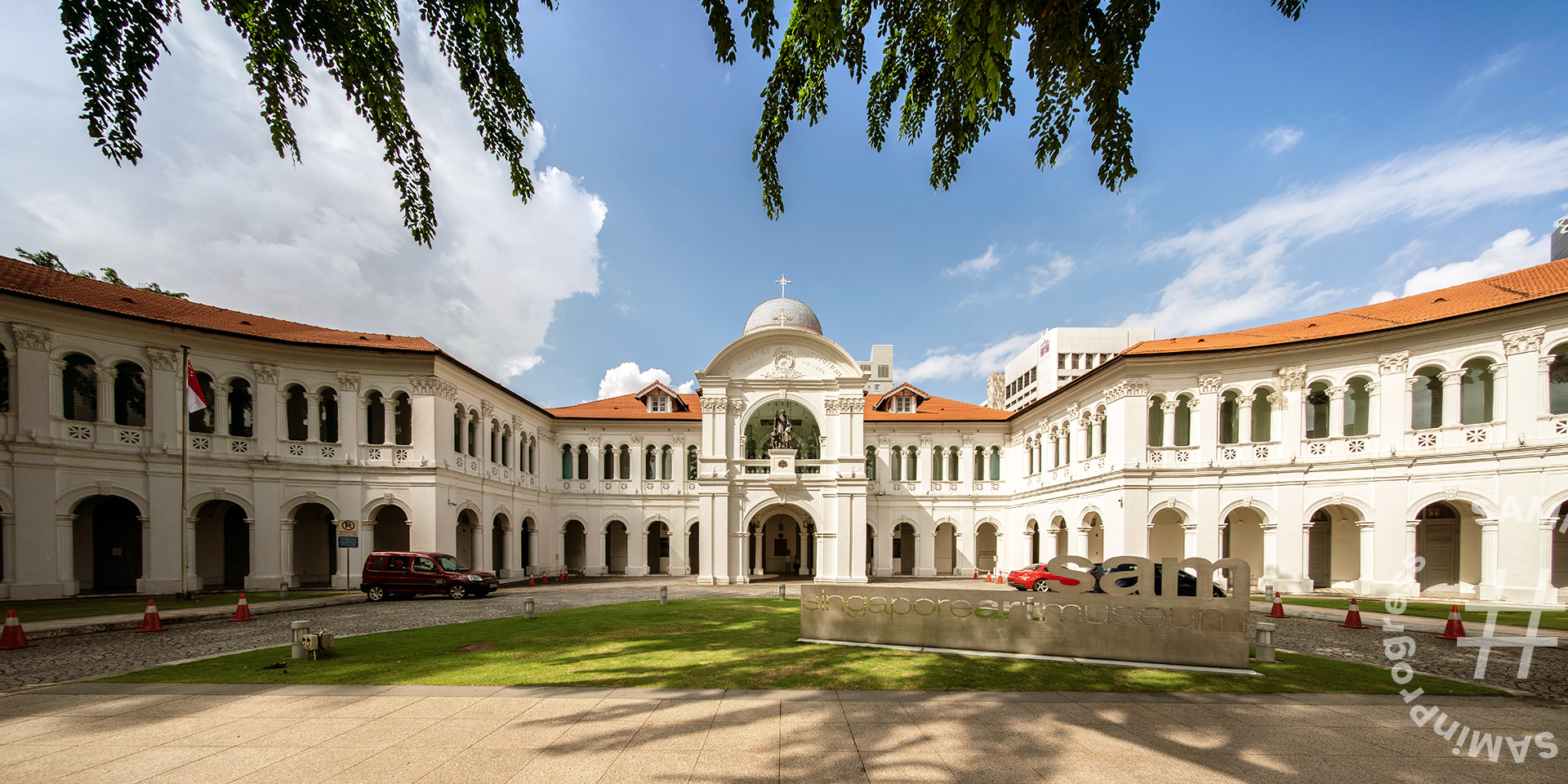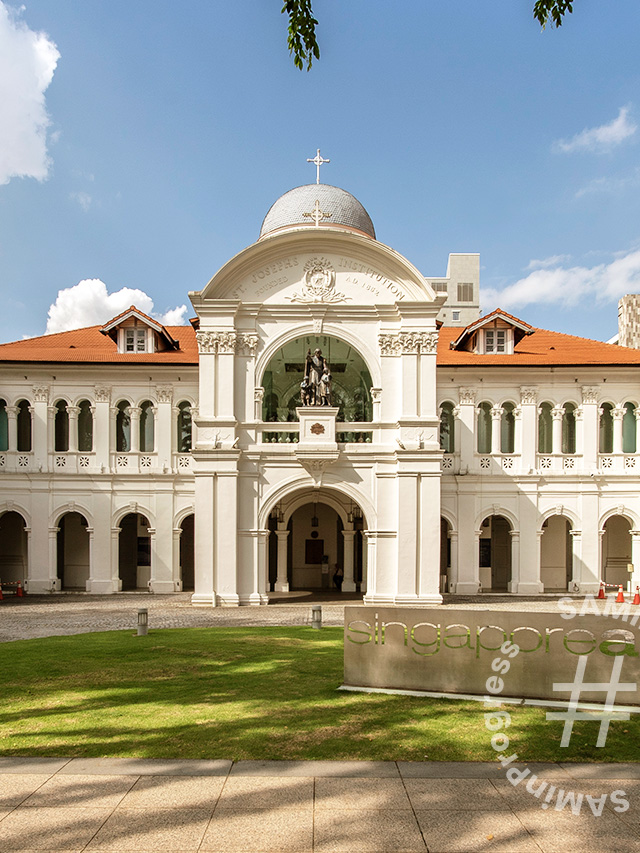Becoming SAM: Our Top Three #Throwbacks
Many passers-by along Bras Basah Road get trigger happy at the sight of our museum building, and it’s not hard to see why. After all, our 164-year-old building defies the cookie-cutter aesthetics of the urban concrete jungle around it. From its unique wings that curve out like embracing arms, to its elegant Doric columns and ornate floor tiles, our building does make for the perfect backdrop for shutterbugs.

Photo credits to the following Instagram users: @sudheeee and @mervkwok (photo in large frame at top left) and @abu_kn_x4 (photo in large frame at bottom right). Photos in smaller frames at top right (from left to right, top to bottom): @elissa_rachel; @aibcordero; @guoshengz and @aleks_phates. Photos in smaller frames at bottom left (from left to right, top to bottom): @lovekimberleigh; @maxy_milano; @ivonecr and @amigoluna.
_____
It’s hard to imagine how much more this architectural gem of a building will be transformed after its redevelopment – its first major one since opening as the Singapore Art Museum some 23 years ago! As we prepare to cover up our museum building for its revamp, we give you curious onlookers a crash course on the building’s storied history – from school to museum:
#1 It Got Its Curves
Move the slider to the left or right with your mouse/finger!
Photo (before): did you know that our building first started out as a rectangular block without its iconic curved wings (Image © St Joseph’s Institution)? Photo (after): In 1903, Father Charles Benedict Nain, one of the De La Salle Brothers who came to Singapore to build schools, designed the curved wings of the building1, which dramatically changed its silhouette, making it a unique architectural landmark in the heart of the city (Image © Singapore Art Museum).
_____
In 1855, the foundation stone for the school’s building was laid, but because of limited resources, it wasn’t until almost half a century later, in 1903, that its iconic curved wings were added1. If not for a site study that proved that the building was not able to support the addition of a new floor1, we would not have the beautiful curved gallery wings we have today!
#2 It Had to Wing It
Move the slider to the left or right with your mouse/finger!
Photo (before): ex-SAM curator Tay Swee Lin (far right) giving visitors a tour of Modernity and Beyond: Themes in Southeast Asian Art, the first exhibition held at one of the SAM curved galleries when we opened in 1996 (Image © Singapore Art Museum). Photo (after): one of the curved galleries was converted into an educational space called ‘The Learning Gallery’, where it showcased contemporary artworks from SAM’s permanent collection (Image © Singapore Art Museum).
_____
One of the challenges our curators had to contend with when SAM first opened was the curvature of the gallery spaces. They had to ensure that artworks could flush nicely against the curved walls. Over the years, we have learnt to embrace and adapt to the unique spaces we inherited from the former school building.
#3 It Found Its Calling
Move the slider to the left or right with your mouse/finger!
Photo (before): a photo from 1967 showing Mrs Fong Sip Chee, wife of Parliamentary Secretary to Ministry of Culture, being greeted by Principal of St Joseph's Institution, Brother Patrick upon arrival at the school on Bras Basah Road to attend its annual sports meet (Image courtesy of National Archives Singapore). Photo (after): SAM curator Joyce Toh giving visitors a talk about the artwork Harvest (2018) by Gerald Leow, shown at SAM Front Lawn (Image © Singapore Art Museum).
_____
From its former self as Singapore’s first Catholic boys’ school to braving a World War – serving as a Red Cross hospital and a temporary barracks during the Japanese Occupation2, our historic building has come a long way to becoming Singapore’s first museum dedicated to the visual arts (aka SAM!). Despite how the building has evolved in form and function over the past sixteen odd decades, it has stayed true to its raison d'être of being a space for education – whether as a school or as an art museum.
Move the slider to the left or right with your mouse/finger!
Photo (before): a photo from 1992 showing Minister of State for Information and the Arts and Education Dr Ker Sin Tze officiating at site-ceremony and chairs the press conference of the fine arts museum at former St Joseph’s Institution building, Bras Basah Road. He unveils a model of the re-purposed building that would later be occupied by the Singapore Art Museum (Image courtesy of National Archives Singapore). Photo (after): aerial view of the Singapore Art Museum building at Bras Basah Road in 2019 (Image © Singapore Art Museum).
_____
Interested to know more? We will be bringing you more stories on SAM’s redevelopment and other exclusive content. If you have a story to share about SAM or its buildings, please reach out to us at [email protected].
_____
Sources:
1 Brown, Francis. “Memories of SJI – Reminiscences of Old boys and Past Teachers of St Joseph’s Institution, Singapore.” Accessed June 12, 2019. https://www.sji.edu.sg/news-and-events/sji-publications/memories-of-sji.
2 Tan, Bonnie. “Former St Joseph’s Institution (Singapore Art Museum)” Accessed June 13, 2019. http://eresources.nlb.gov.sg/infopedia/articles/SIP_1625_2009-12-31.html?s=singapore art museum.


